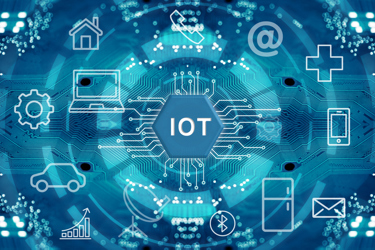How Will 5G Reboot Retail IoT?
By Shannon Flynn

The Internet of Things (IoT) has been one of the most valuable assets to retailers throughout the COVID-19 pandemic. As e-commerce and social distancing have become norms, it’s more essential than ever for business owners to adapt to the new technological landscape. One primary way to do so is through the use of the 5G network. With 5G at the forefront of your retail IoT strategy, you can prepare for any changes while making a profit.
5G Revitalizes Retail IoT
5G promises to bring a digital transformation by connecting people and devices across distances with innovative speeds. It’s faster than the current 4G and LTE networks. In addition, it uses edge computing to reduce latency and facilitate smoother transfers of large amounts of data in an instant.
5G will likely be 100 times faster than 4G once it reaches its full, widespread potential. This speed means that downloading a long, high-quality video could happen in under 10 seconds. These speeds will enable the retail industry to gather and process consumer data faster and more reliably.
Through more reliable bandwidth connections, you can quickly acquire data from transactions, engagement, endpoint devices, and overall consumer behavior. In addition, you may need to exchange your data with other companies you partner with, like those on your supply chain, to ensure everyone is on the same page.
However, you also can enable newer technologies that create an efficient, satisfying shopping experience for consumers online and in stores. Data and new shopping methods help retailers stand out in their field.
Using 5G In Retail
You can use new 5G-enabled retail IoT solutions to overcome the challenges brought by the pandemic. These innovations include new ways to check out in stores and shop online.
Cashierless Checkout
IoT sensors and scanners enable retailers to change the way customers check out in stores. Instead of the traditional cashier-based method, customers can now use self-checkout kiosks, where 5G can instantly report the data about sales and inventory. This will help you know what to order and what to advertise more.
Beyond kiosks, though, IoT sensors can remove the checkout process altogether. Perhaps the most prominent example of this dynamic is the Amazon Go stores. They let consumers gather the groceries they need and simply walk out of the store when they’re done. They connect a payment method to their identification beforehand, which the store automatically charges them for.
This kind of rapid connectivity requires a durable and reliable network like 5G to transport the data without latency.
Inventory Tracking
You also can use IoT tracking devices to monitor your shipments and inventory. Impediments sometimes arise in the supply chain, whether it’s harsh weather, traffic, or theft. To work through these setbacks, you can use the trackers on your shipments to see their precise locations in real-time.
Once you receive your order, you can continue to track the inventory with similar tech. RFID microchips will show you when customers purchase each item. You’ll then be able to restock your shelves as soon as possible.
Both of these forms of tracking require 5G networks to transfer the data from remote locations. That way, you get the information you need without delay.
Augmented Reality
Augmented reality (AR) offers customers a new way to shop from any location. They can virtually immerse themselves into a store, where they see the available items. Once they select a product, they can customize and order it. Ikea enables this form of AR shopping — customers can virtually place furniture in their home and change size and color before purchasing.
This form of shopping offers a personalized experience for consumers. It also allows them to find exactly what they need before purchasing, which could reduce returns and lost profits.
5G will be invaluable to facilitate this connection and the rapid transfer of data and service. This IoT innovation must work together with 5G for the best success.
A New Retail Landscape
This combination of 5G and IoT devices and systems creates a new form of retail, one that brings data to the company in an instant. Retailers must adapt to these innovations to stand out and offer the most creative services in any market.
About The Author
Shannon Flynn is a technology blogger who writes about AI and IT trends. She's also the Managing Editor of ReHack.com and freelances for sites like IoT for All, ChatbotNewsDaily, and more. Follow her on Medium or MuckRack to read more tech news.
